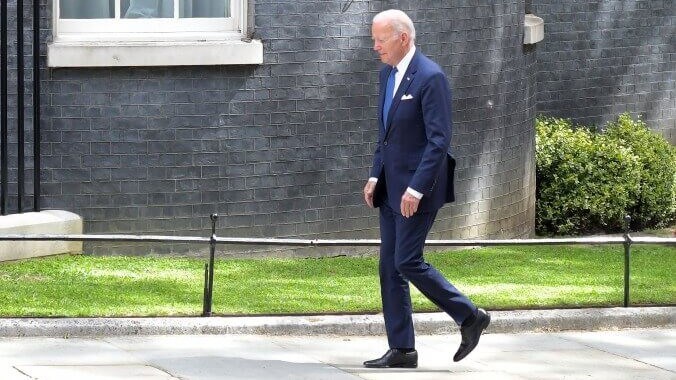Biden is Walking a Tightrope on Climate Change Policy
Photo by Ryan Jenkinson/Story Picture Agency/Shutterstock
A year ago, when the Biden administration issued a final approval for the massive Willow oil drilling project in Alaska’s North Slope, the response from climate activists and youth groups was immediate. The decision, according to the Sunrise Movement’s executive director Varshini Prakash, “abandons” young voters who had been promised an end to fossil fuel extraction on public land. Ben Jealous, president of the Sierra Club, called it a “major breach of trust.”
The move, sandwiched between truly meaningful climate action throughout Biden’s years in office, highlights the delicate dance he is attempting. The administration has undoubtedly produced more climate change progress than any other, but with Willow and other policies he has risked alienating young voters in particular as November approaches. And if he alienates enough of them, that could mean a second Trump presidency and an unequivocal disaster for the climate: a second go-round of abandoned international treaties, increased drilling just about everywhere, a host of likely rolled back regulations, and an overall increase in CO2 emissions equivalent to what Japan and the European Union combined produce every year.
Willow, owned by ConocoPhillips, will yield 600 million barrels of oil spread out over 30 years – a window that runs conspicuously past the global net-zero goal of 2050 – and will help emit the equivalent of two million gas-powered cars’ worth of carbon dioxide annually. The administration claimed its hands were tied, legally speaking – a common refrain, reflective of Biden’s generally practical approach to policy maneuvering, but one that doesn’t appear to be a particularly winning argument from someone who as a candidate repeatedly promised “no more drilling on federal lands, period. Period, period, period.”
A bad look, to be sure – but it followed the passage of the Inflation Reduction Act, easily the biggest investment in climate change mitigation in the country’s history.
Then again, it isn’t just Willow. In January, activists circulated data showing that the administration has approved nearly 10,000 oil and gas drilling permits on public lands, at more or less the same pace as the Trump administration. That followed an announcement last fall of new lease sales for offshore oil drilling in the Gulf of Mexico. This time, the caveats included that many of the new permits may have been moving through the system slowly for years, and the offshore lease sales represent the fewest such sales of any administration since the program began.
Swing back the other way: Last week the administration unveiled its new tailpipe emissions rules that if fully implemented will result in an electric vehicle revolution capable of preventing seven billion tons of greenhouse gas emissions, more than a year’s worth from the U.S. as a whole. Or another blow to the oil and gas industry: in January the administration put a pause on permitting of liquified natural gas export facilities, infrastructure monstrosities that would themselves help lock in many excess tons of CO2 over decades.
“This pause on new LNG approvals sees the climate crisis for what it is: the existential threat of our time,” Biden said in a statement.
The balance the administration is attempting is essentially between enacting policy likely to stand up to legal challenge (16 Republican-led states are suing the administration over the LNG facility pause; the American Petroleum Institute has sued over the relative lack of offshore oil lease sales; expect any number of challenges to the tailpipe rules any day now) and enacting policy likely to bring climate-centered voters to the polls. This doesn’t happen in a vacuum, of course, and Biden has risked losing huge swaths of young voters through his handling of the ongoing destruction of Gaza. Polling of young voters generally has shown Biden leading Trump, though the gap is not a huge one and may be shrinking.
There is still time before November, though, for further climate-related moves – though just how impactful is an open question. A long-awaited rule from the EPA is expected in April that will address emissions from power plants, though even that has been diluted, with the agency announcing in February that the rule will no longer apply to existing natural gas plants. Biden’s tightrope walk continues, apparently, and a fall off that rope means U.S. climate targets could fall right along with him.